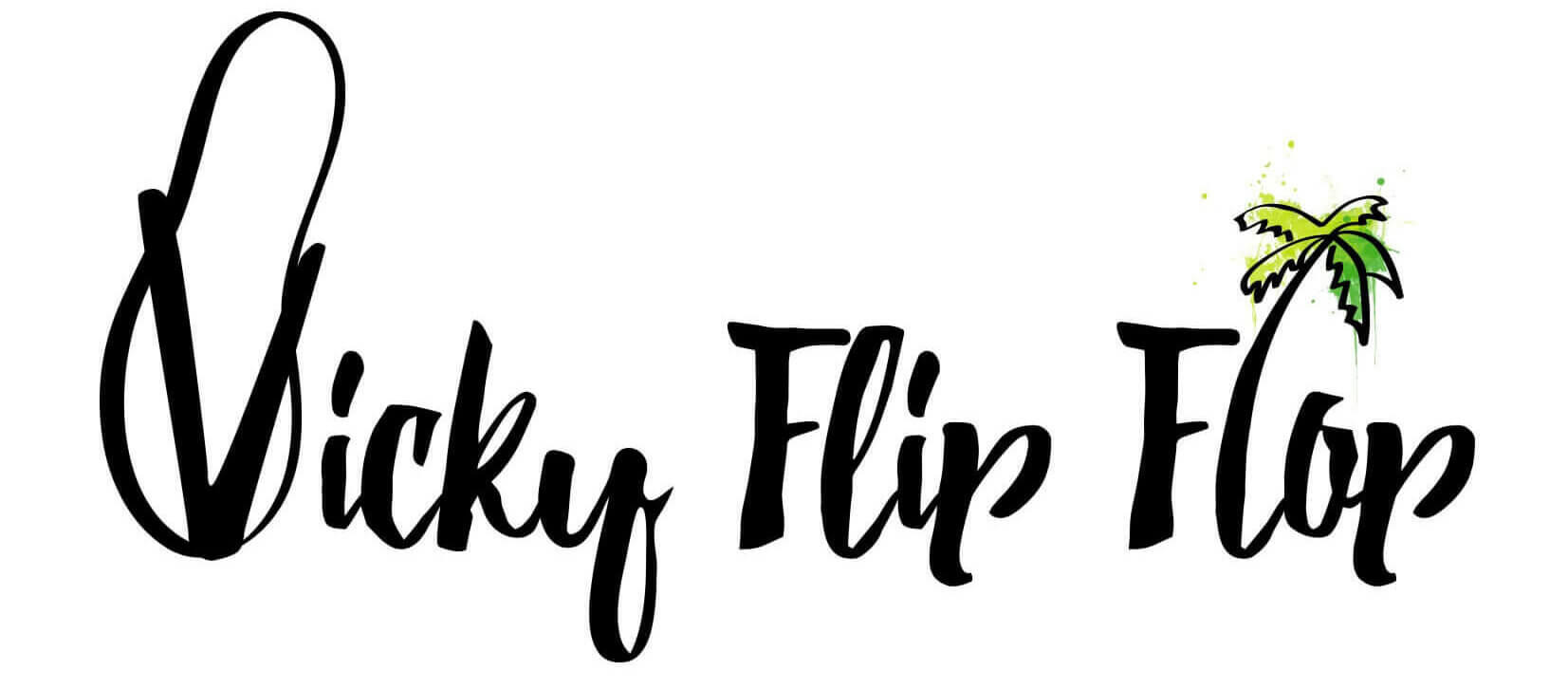What is Day of the Dead Festival?
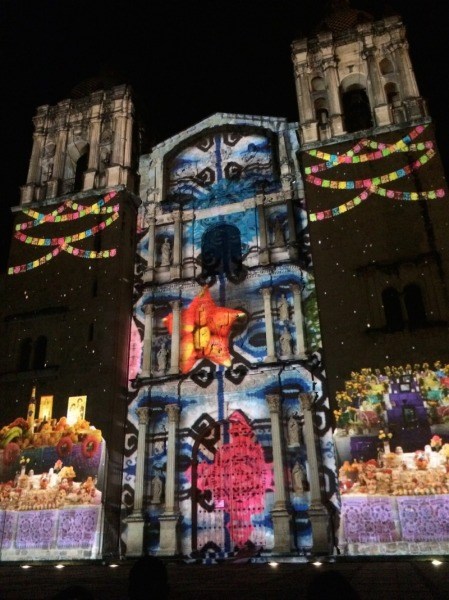
Right now I’m sat in a coffee shop by the Santa Domingo Church in the centre of what were huge Day of the Dead celebrations last night, and the night before. There’s one night left of Dia de los Muertos, and my new friends and I are planning on going all out on the costumes to fit in.
But what is this Day of the Dead Festival I’m filling my Instagram feed with, and why?
Day of the Dead Festival, or Dia de los Muertos to give it it’s proper Spanish name, is a chance for families and friends to come together and celebrate the lives of their dead loved ones. In Mexican culture it’s believed that on November 1st, at 3pm precisely, souls return to the living for just 24 hours and you must be there to greet them with the pleasures they enjoyed most in life.
For three days – from 31 October to 2 November – Mexicans get together to share stories of friends and family that have passed. The dead souls are not feared, but are warmly welcomed and actively enticed through a variety of Dia de los Muertos traditions.
Is Day of the Dead Festival morbid?
Day of the Dead Festival is fun! It’s a joyous, vibrant and colourful occasion for everyone to get involved in. A carnival of death can be difficult to comprehend but it’s a celebration of what the dead have bought into the living’s lives, not a sadness that they’ve gone. During Day of the Dead Festival even the graveyards are fun places to be – and check out the main Santa Domingo Church above, complete with light projections.
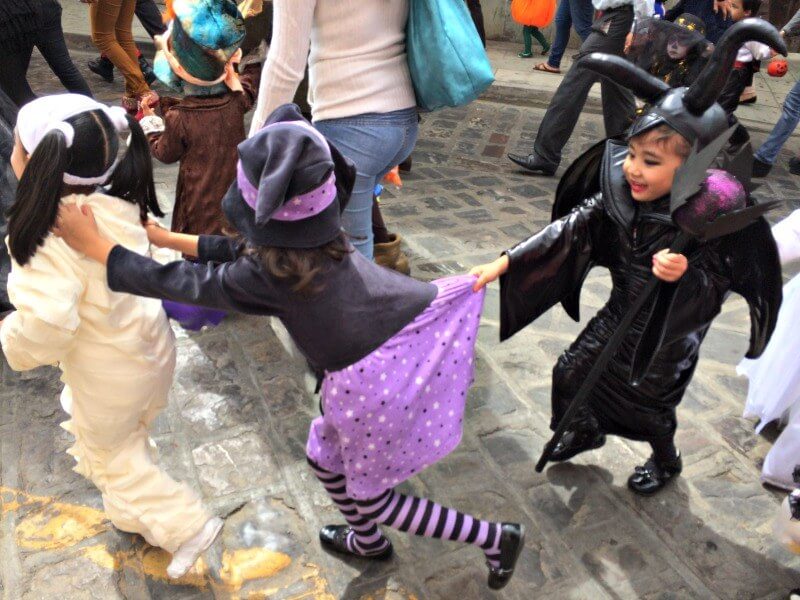
Unlike England, in Mexico, death is talked about, it’s fêted and made light of in every aspect of Mexican culture from art to TV shows.
“To the inhabitant of New York, Paris or London, death is a word that is never uttered because it burns the lips. The Mexican on the other hand, frequents it, mocks it, caresses it, sleeps with it, entertains it; it is one of his favourite playthings and his most enduring love.”
– Octavio Paz in The Labyrinth of Solitude, Nobel Prize for Literature Winner
Best place for Day of the Dead Festival
After a lot of research I decided the best place for me to celebrate Day of the Dead Festival was in Oaxaca City. Oaxaca (pronouced Wahaca, like the restaurant) has a large indigenous population to keep the festival traditions alive and the comparsas (parades) are legendary.
I arrived in Oaxaca on 22nd October so I could see how the city prepared.
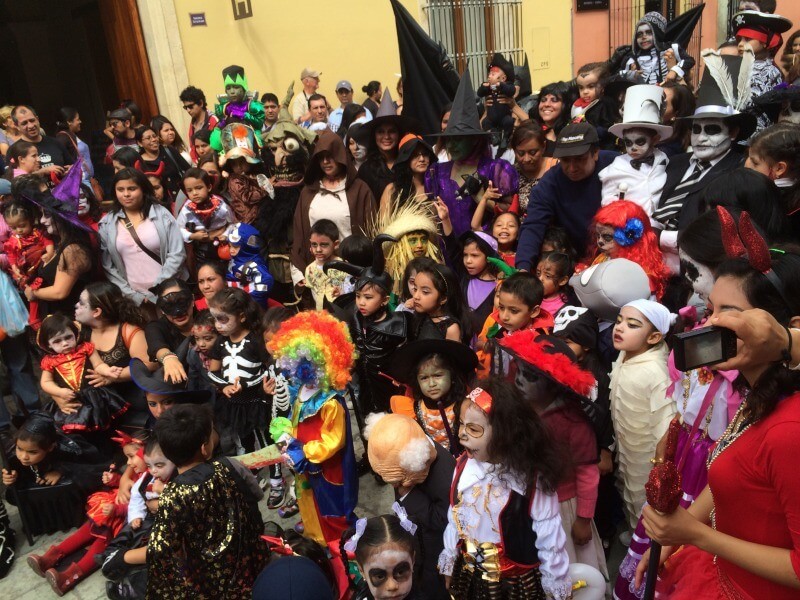
Being in Oaxaca is so exciting – a simple walk from my hostel to get some tacos could involve passing by a full on parade complete with fancy dress. Skeletons and La Catrina images are everywhere and the squares are full of people in face paint by night. As I got ready in my hostel beforehand I could hear the trumpets, tubas and fireworks from two comparsas just minutes from my door.
I love Oaxaca.
Preparing for Dia de la Muertos
Preparations for Day of the Dead can start long before November 1st for Mexicans. There’s the food to cook and eat in the home, then there’s the feast to pack up and take to the graves. There’s the costumes to prepare, the Day of the Dead Festival altars to create in the home and at work, and the graves to spruce up and decorate.
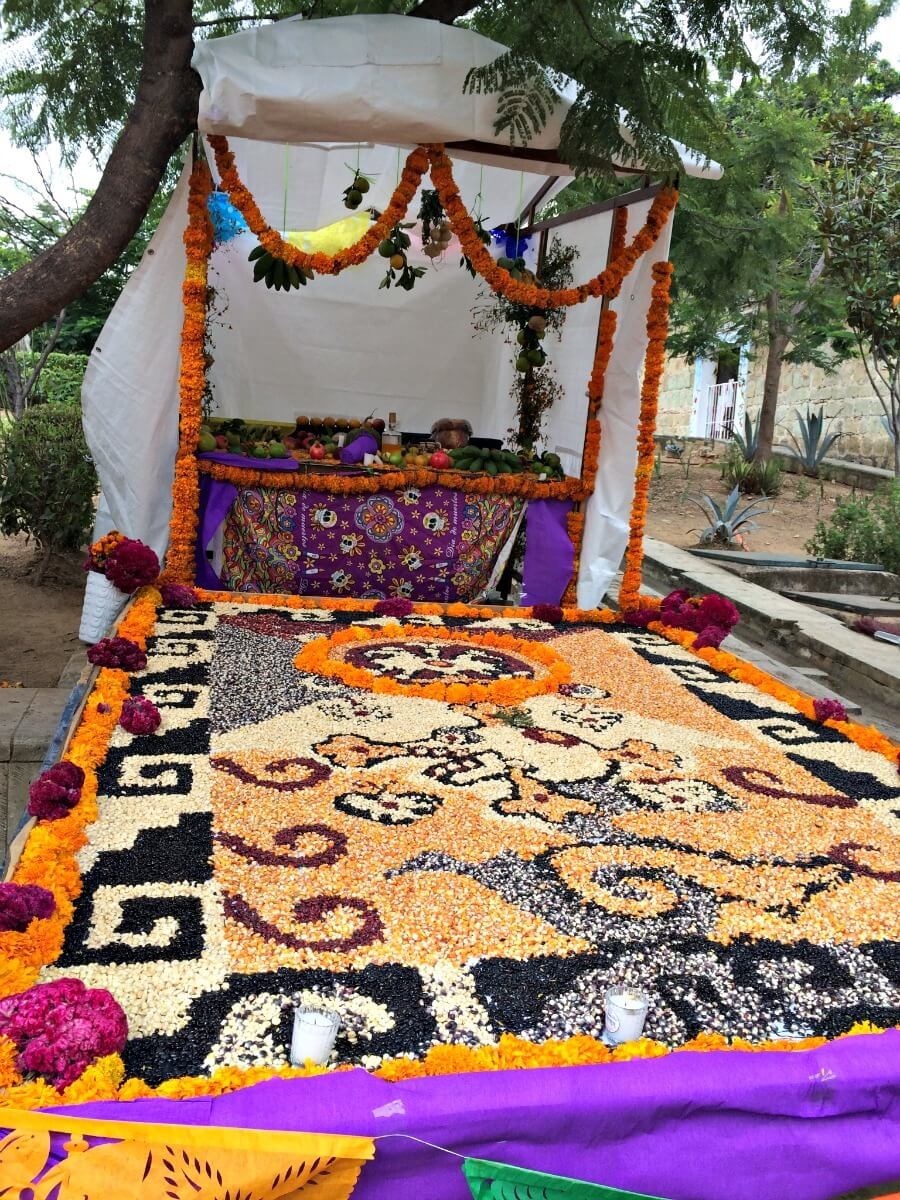
Day of the Dead is to Mexicans, what Christmas is to much of England or Thanksgiving in the USA – children who’ve moved away for education or work will always try their hardest to return home to be with their families. There’s a lot of Day of the Dead traditions to follow and plan for the big day.
Cemeteries during Day of the Dead Festival
When celebrating the dead, it helps to have a few deceased around, making the graveyards in Mexico the perfect place for the party. They’re a huge part of the festivities. Mexicans will set up all night vigils and stay with the graves for the 24 hours, sometimes even longer. It’s not a morbid vigil though, they’ll take all their carefully prepped food along, some Mezcal, a few beers, blankets and even music. Mariachi bands parade through and people stand around chatting and enjoying the food stalls that pop up especially for the occasion.
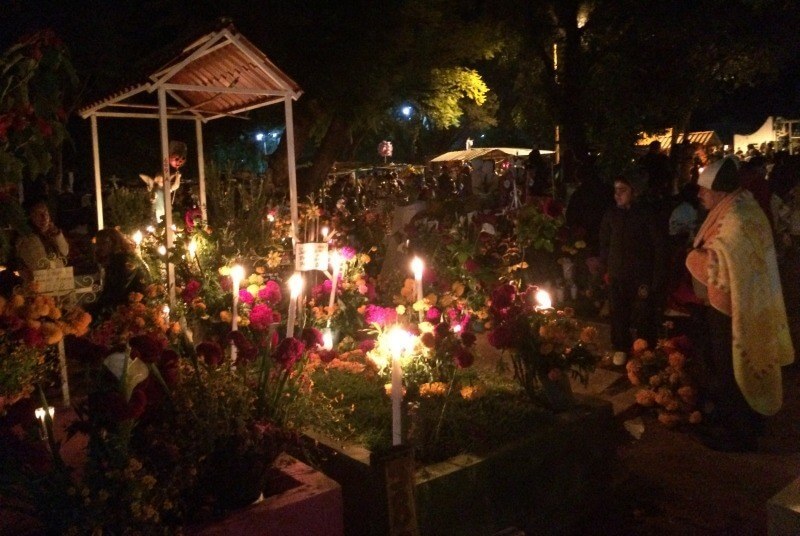
Xoxocotlan Cemetery is one of the most important graveyards in Oaxaca, and hosts a huge celebration on the 31 October. I went in the morning to see them prepping, and again from 11pm-2am to join in the party. It was still going strong when I left!
Day of the Dead countdown
October 31
Although Day of the Dead Festival is celebrated at the same time as Halloween, the two festivals are very different. Day of the Dead is a time for family, both dead and alive. The traditions of Halloween are definitely included in the Festival celebrations though, with trick or treaters, fancy dress and fireworks.
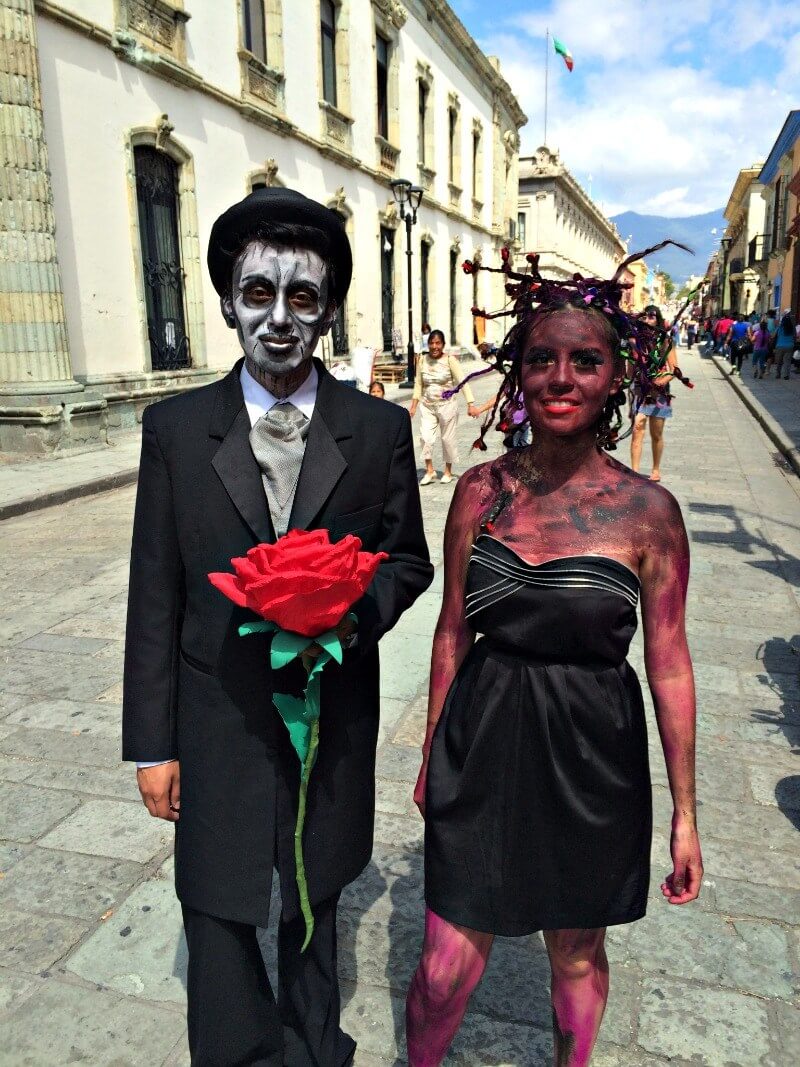
In the cemeteries the day is spent preparing the grave for the soul’s arrival – painting, flowers, offerings – and the evening is spent keeping vigil. In Oaxaca City there are parades of music and fancy dress for all ages throughout the day and into the night.
In my hostel – Casa del Angel – they set up an altar, we drank Mezcal, beat up a piñata, ate tostadas, painted our faces and sat by a campfire on the roof terrace.
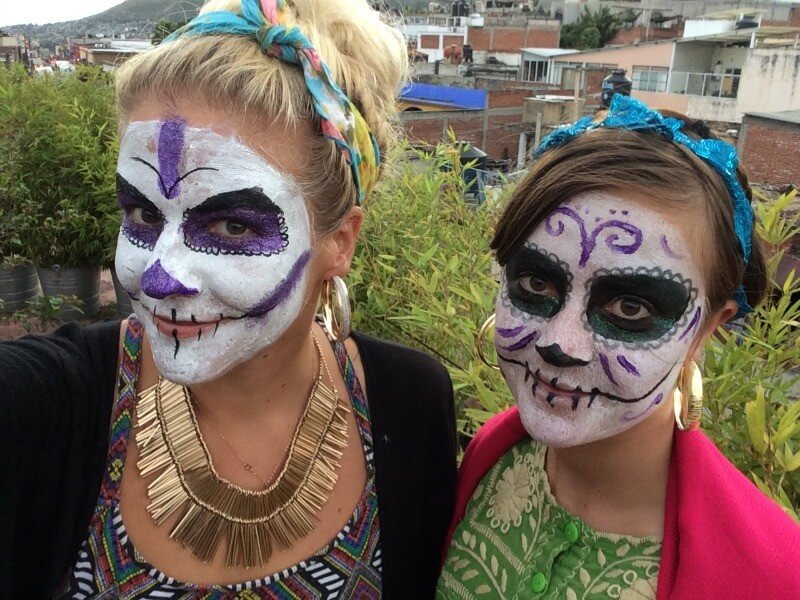
At home families go to each other’s houses to pay their respects at the altars. Food is cooked, eaten and shared and knocked back with a drink or two. Then the whole extended family will make the pilgrimage to the cemetery to spend the night.
November 1
The first day of the Day of the Dead Festival celebrates the souls of dead children. It’s believed the souls of children return to earth first, followed by the adults the next day.
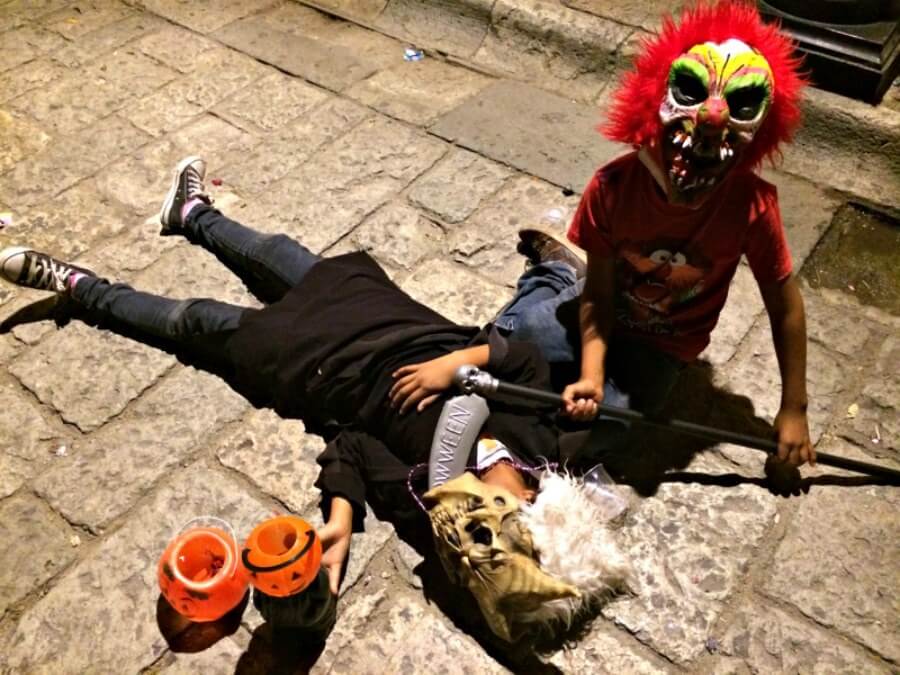
Throughout town there are celebrations all day: skull painting classes, cinema screenings, parades and sand sculptures. At 3pm it’s believed the souls arrive, and stay for 24 hours until 3pm tomorrow. This is what the festival has all built up to.
November 2
The festivities from the day before carry on. There are more comparsas, dress up and the parties at the graveyards are still going strong. I went down to the Panteon Central in Oaxaca City and just like the Xoxocotlan Cemetery there were food stalls set up, people were still laying flowers and there was a general air of celebration.
Like many festivals Day of the Dead is prepared for and carried out following the traditions that have lasted through the years. Mexico’s history has shaped the festival into what it is today and the past inhabitants have added their unique stamps on Dia de la Muertos so the Catholic feasts of All Saints’ Day and All Souls’ Day have been combined with the Hispanic rituals.
Just like with Christmas, Thanksgiving, Diwali and other big festivals around the world there are a lot of traditions to follow to get Day of the Dead just right. Here are a few of the ones I enjoyed most.
Altars (aka ofrendas)
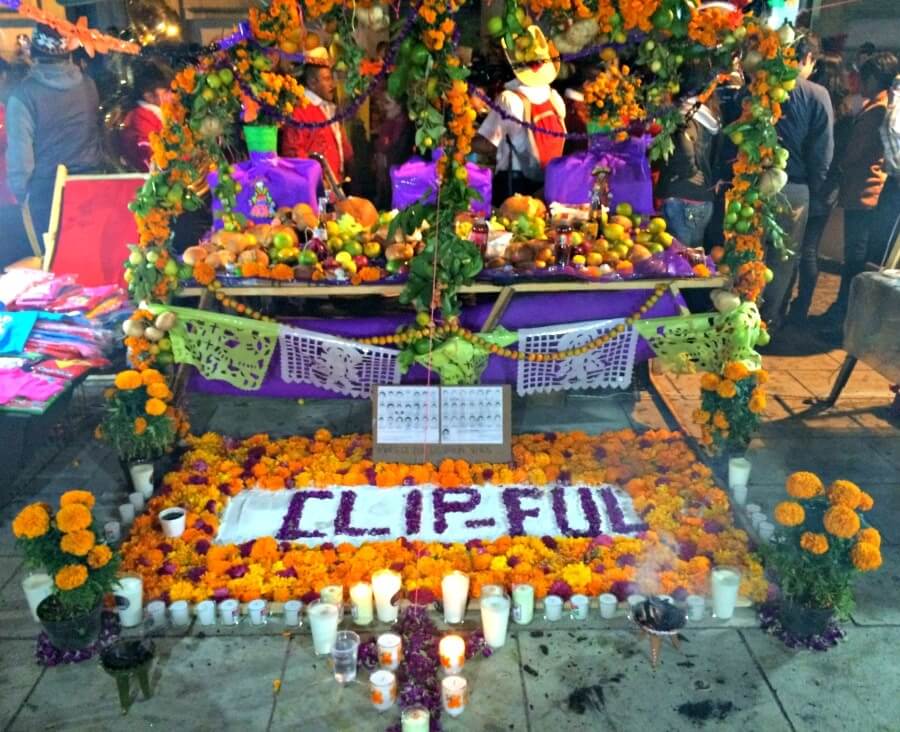
The altars started popping up all over Oaxaca, the city I was staying in for the festival, at least a week before the Day of the Dead actually began. The altars are sacred – it’s how the souls will find their way back to their family. Altars are decorated with food, drink, sugar skulls, incense, candles, the soul’s favourite earthly things, and photos and flowers too.
The best altars, or ofrendas as they’re known in Spanish, are fabulously over the top. This one was made in the coffee shop near my hostel – they spent three days constructing it, two of them, I went back to the café every day to see how they were getting on.
You can see the altars in homes, work spaces, shops and restaurants throughout the festival. Some of my friends chose to build their own and dedicate them to their dead loved ones. Anyone can set one up.
Papel picado
Papel picado is like bunting, except more complicated. Mexicans will cut the outlines of skulls and skeletons into the paper and then they’re hung up around the ofrendas, outside windows and between houses. The intricate designs of papel picado could take hours to cut but it all adds to the vibrancy of Day of the Dead.
Skulls
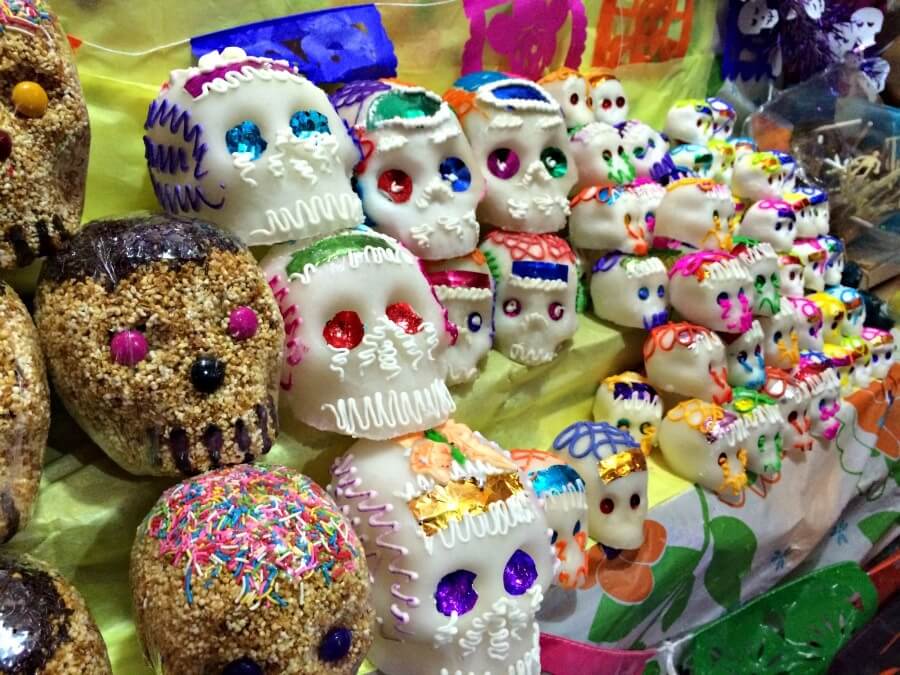
Sugar coffins and sugar skulls are for sale everywhere. Mexicans give them to family, friends and lovers as a gift of friendship. You can even get them personalised. The idea behind giving a skull is to show that the love for that person is so strong, it will last well into the next life and transcend death. This is why the image of the skeletal bride and groom is so popular too.
The emphasis on using sugar to create these gift dates back to a time when locals couldn’t afford anything else, they had to learn how to craft sugar into their visions.
I’ve never seen so many skeletons and skulls in my life as I did in Oaxaca. Altars featured rows and rows from tiny little ones to almost life size. It’s well known that Mexicans would rather joke about death than fear it, and they use skeleton and skull imagery to show it. I started off thinking it was quite morbid, but came to really like it. It’s one of the best religious festivals around the world.
Flowers
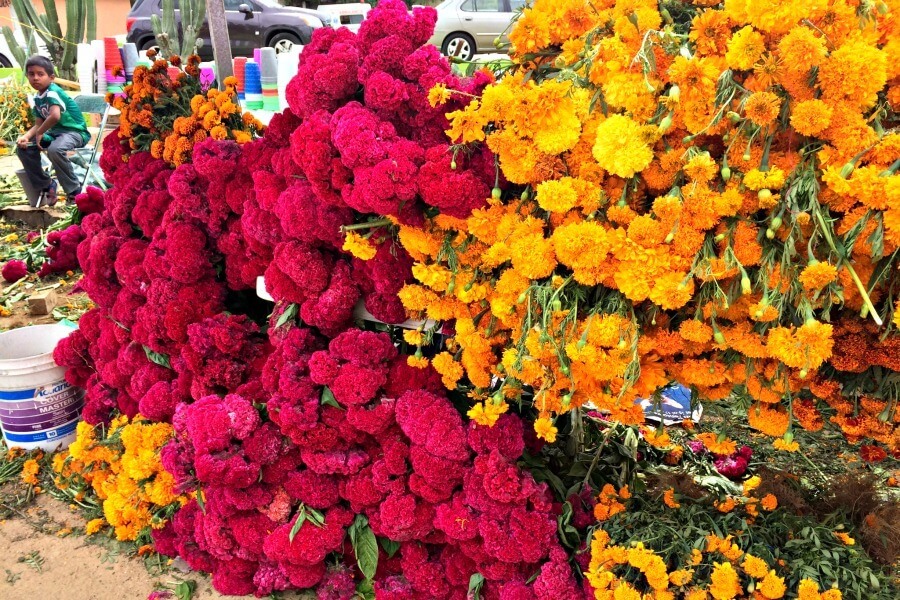
Walk through the markets on the run up to Day of the Dead Festival and bright cargoes of gold and orange marigolds, cockscomb and baby’s breath burst from every third stall.
Placing flowers on the graves is another way to show how much you loved that person, and to give them a nice grave to come back to. Women will also put the flowers in their hair and stalls pop up around the graveyard to give everyone a chance to buy a bunch.
Food
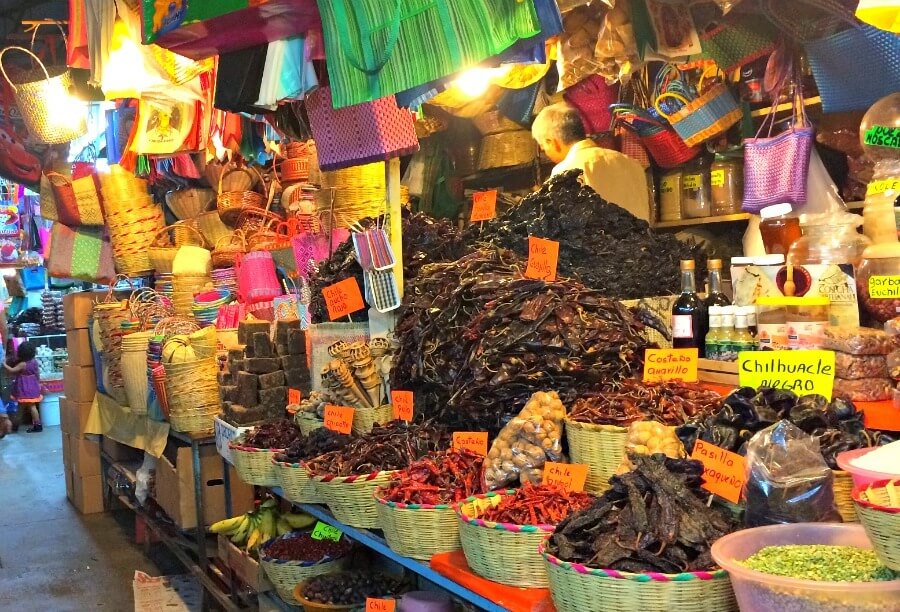
The food preparations in the home are seemingly never ending. Mole is really popular in Oaxaca and they’re proud of their unique 7 varieties. During the Day of the Dead Festival it’s served spicy with chicken and turkey. Tamales and enchiladas are also popular and street stalls selling chocolate and sweet coffee from huge clay pots called café de la ollas are sure to have queues.
It’s important to give the spirits the things they loved in life, often this translates as creating complicated dishes to please them. Special foods are created to nourish the living and the dead and the feasting is one of the biggest ways to celebrate.
Celebrants buy traditional three-legged ceramic burners to keep the food warm up at the vigil through the night.
Pan de Muerto is baked especially. It’s a special orange or anise flavoured bread that’s shaped into skulls, bones and skeletons, and is only available around Day of the Dead Festival. This ‘bread of the dead’ is used to decorate ofrendas and graves as well as being a treat for the living. Made into a circular shape to represent the circle of life, it’s common in Oaxaca to get the Pan de Muerto with a hot chocolate and dip it in. I tried this and it was delicious.
Sand sculptures
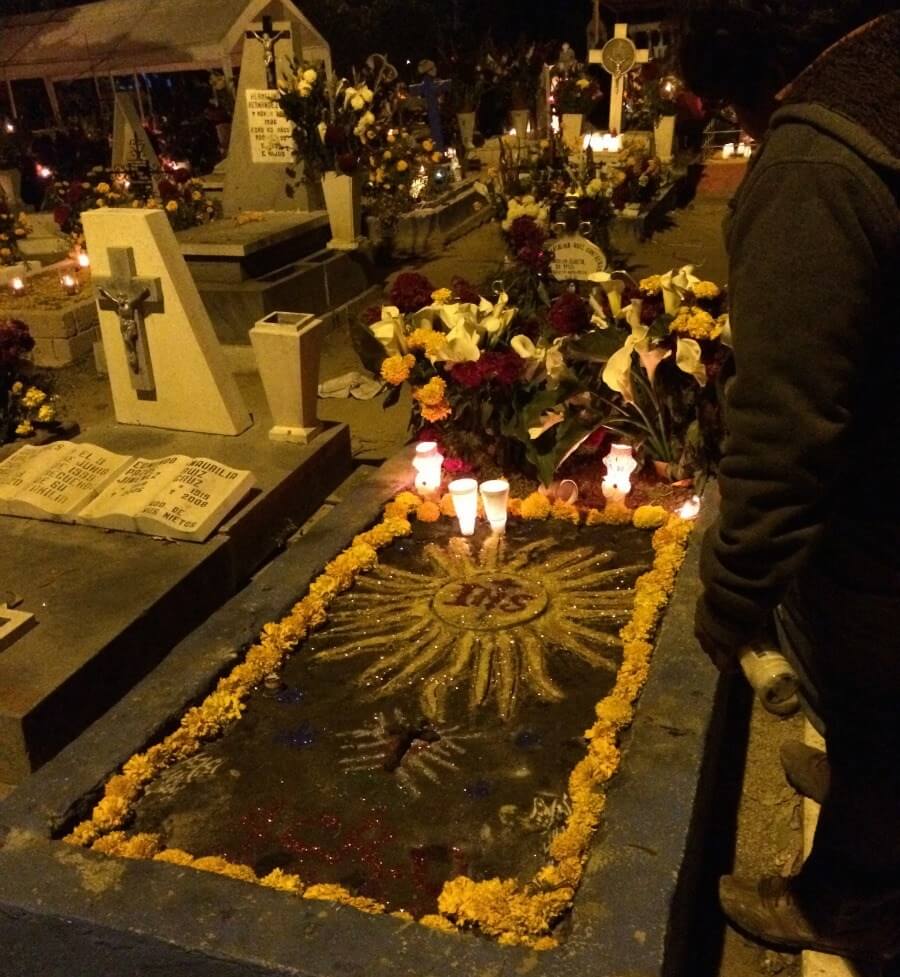
In the streets, at the altars and in front of houses you’ll find these brilliant sand sculptures crafted to depict images of death. There are even some on the graves at the Xoxocotlan Cemetery.
Comparsas
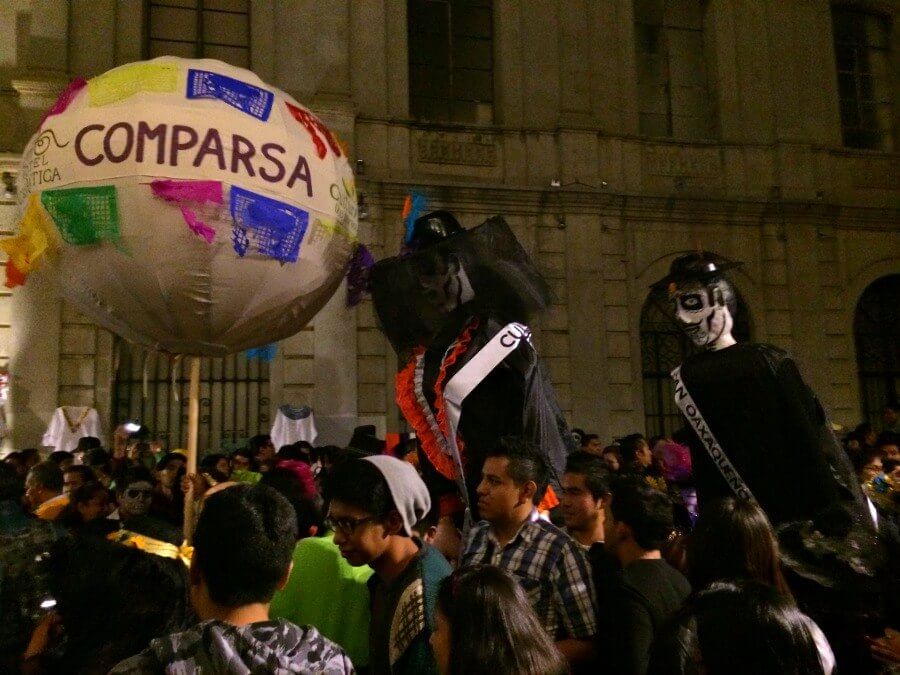
Comparsas are huge in Oaxaca City. This is when masked celebrants, known as mummers, parade and dance through the streets. The whole aim is to encourage the return of any souls who might be lingering.
Monos de Calenda – huge papier-mache puppets – are a key feature of these comparsas, along with fireworks. The Monos de Calendas entertain people before all the action begins and so people know that the parades are coming. I got caught up in about three of these and had a great time dancing around to the music and watching the fancy dress as it went by.
The traditions of Day of the Dead Festival are what keeps it so vibrant and fascinating – show me another festival where you dance around dressed up as a dead person, sipping on hot chocolate and trying to catch the sweets as they fall from the comparsa’s pinata ball. Exactly!
Dia de la Muertos
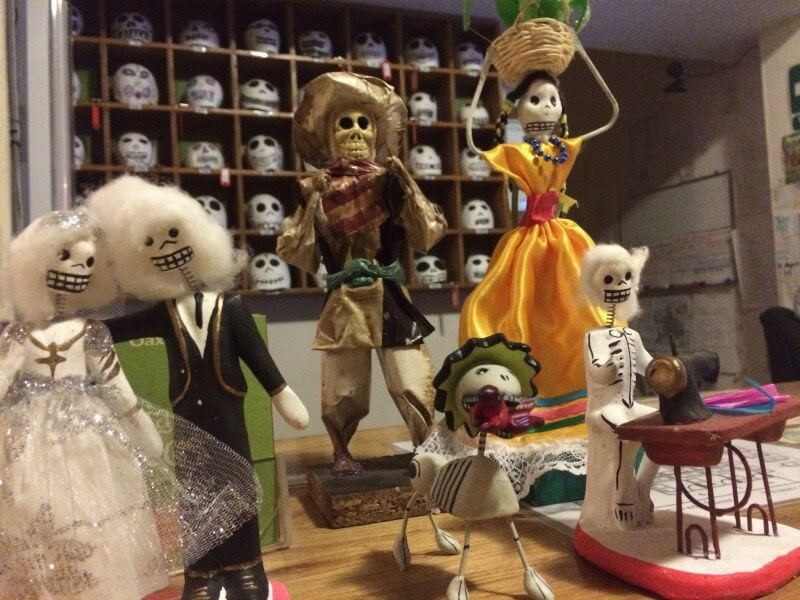
Day of the Dead Festival is a big party hosted by the living for the dead. The wealth of traditions and deep meanings come together so Mexicans can celebrate life and death. Dia de los Muertos is a way to accept death, know that it will happen to everyone, and to laugh about the fact that there’s no way of getting away from it so you might as well honour it.
READ MORE: This is just my experience of Day of the Dead, but if you want some more advice on how to experience Dia de la Muertos in Oaxaca, check out this post from my friend Crystal.
Day of the Dead Festival is definitely one of the most interesting world festivals I’ve ever been to. And it’s definitely got to be seen to be believed, so get yourself over to Mexico this October!
